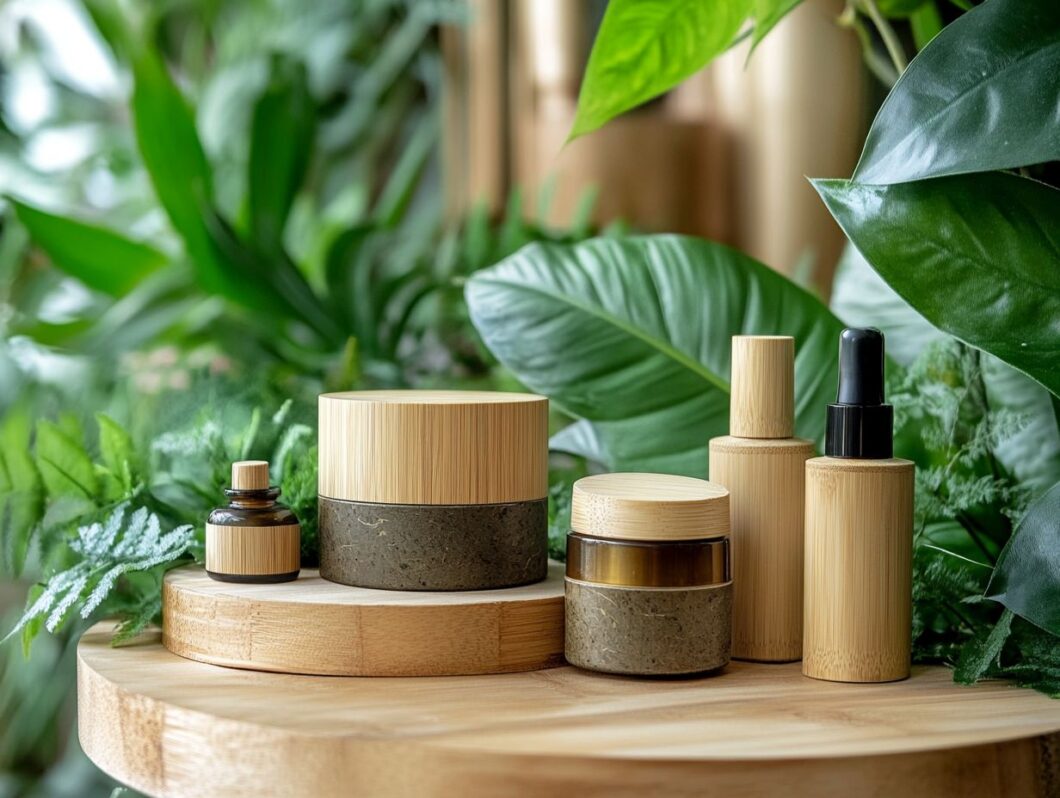As I observe the beauty industry grappling with its environmental footprint, it’s clear that traditional packaging is under scrutiny for its lasting impact on our planet. With consumers increasingly seeking sustainable options, I find that bamboo packaging emerges as a promising alternative.
In this article, I will explore bamboo packaging, including its production process, benefits, and the growing adoption within the beauty sector. I aim to highlight how this solution not only enhances product aesthetics but also significantly reduces environmental harm, ultimately paving the way for a greener future in beauty.
Key Takeaways:
The Environmental Impact of Traditional Packaging
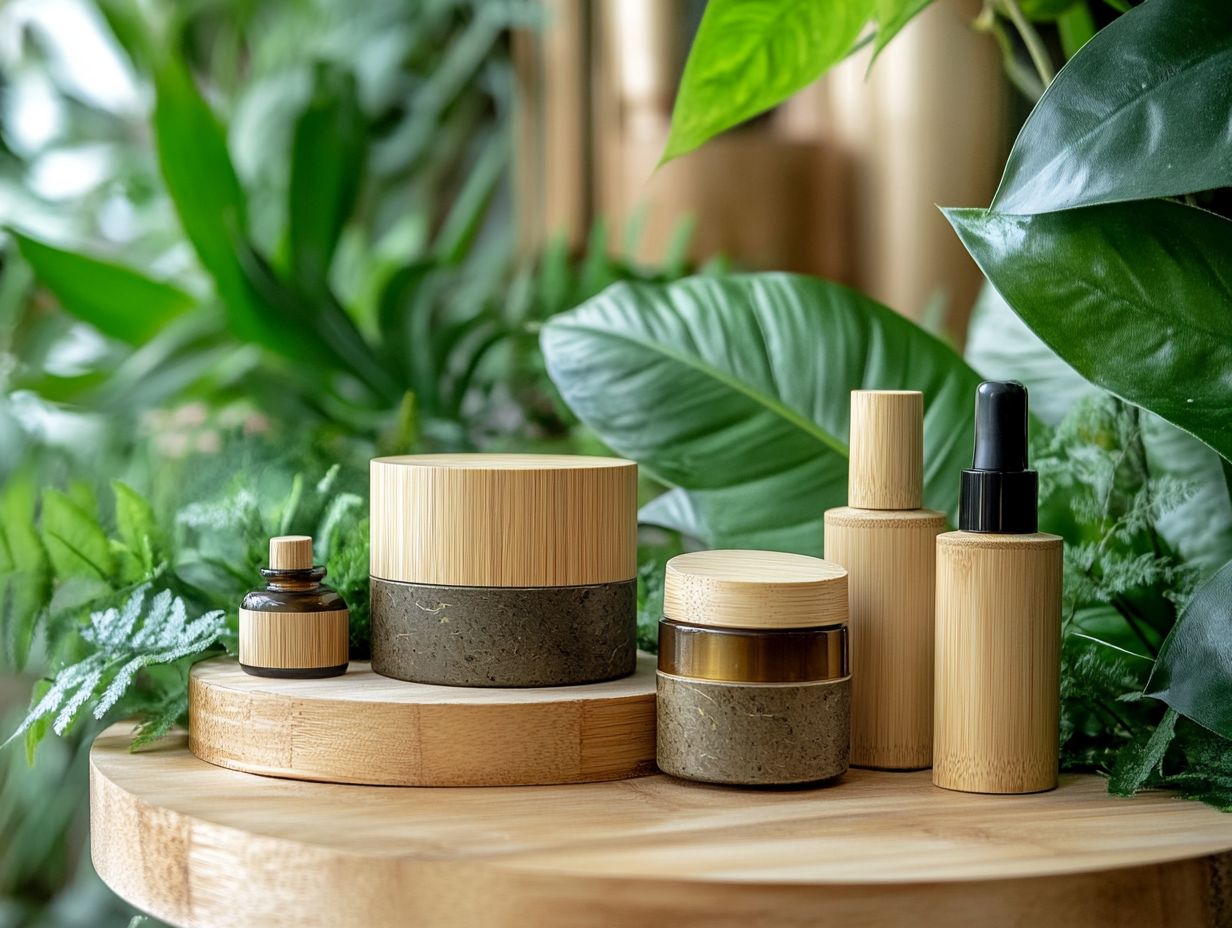
I recognize that traditional packaging, particularly in the beauty industry, has substantial environmental impacts stemming from its reliance on non-biodegradable materials, excessive waste production, and the carbon footprint associated with manufacturing processes.
As consumer demand for eco-friendly solutions continues to rise, the negative effects of conventional packaging practices on the environment have become increasingly evident to me.
Products such as single-use plastic containers not only contribute to pollution but also influence brand image, as consumers are becoming more mindful of corporate environmental responsibility.
The Need for Sustainable Alternatives
The increasing awareness of environmental issues has prompted me to recognize the urgent need for sustainable alternatives to traditional packaging within the beauty industry. As eco-conscious consumers actively seek biodegradable packaging options that align with their values, it is essential for brands to adapt.
This shift illustrates a broader trend where ethical considerations are significantly influencing purchasing decisions, compelling companies to reevaluate their supply chains. Innovative packaging solutions, such as compostable materials and plant-based options, not only resonate with environmentally aware customers but also demonstrate a brand’s commitment to sustainability.
By prioritizing ethical sourcing and transparent practices, companies can distinguish themselves in a competitive market. Emphasizing their dedication to sustainability allows these brands to cultivate loyalty and trust, which ultimately drives consumer engagement and enhances their competitive edge in today’s eco-focused marketplace.
What is Bamboo Packaging?
I utilize bamboo packaging, which involves employing bamboo—a rapidly renewable resource—as a material for developing eco-friendly packaging solutions.
This approach not only addresses the growing demand for sustainable options in the beauty industry but also ensures that the packaging is aesthetically pleasing and environmentally responsible.
How it is Made and its Benefits
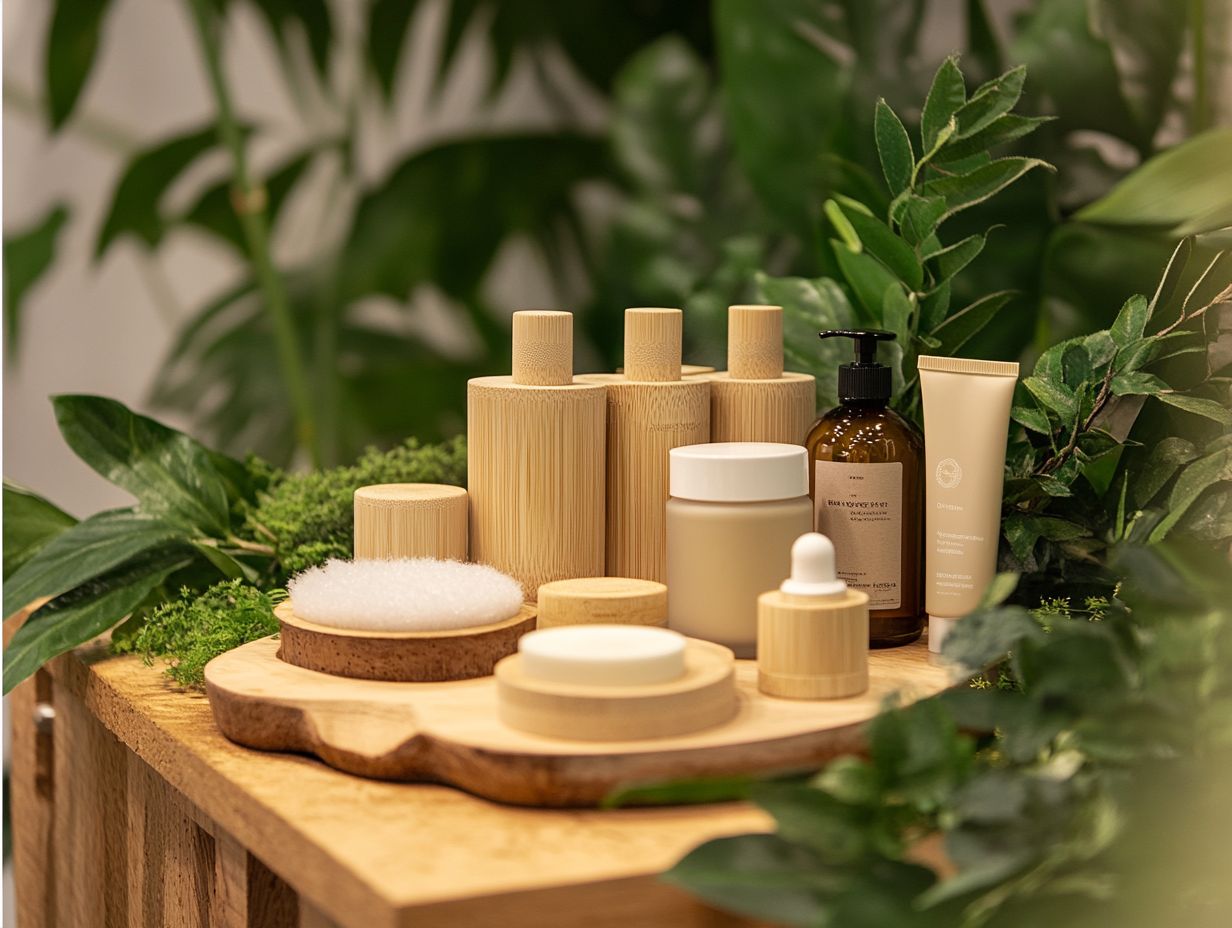
I work with bamboo packaging, which is created through advanced manufacturing processes that transform bamboo into durable and biodegradable solutions. This approach offers unique aesthetic qualities that attract consumers looking for sustainable beauty options.
The journey begins with the careful harvesting of bamboo, followed by techniques such as steaming and molding that preserve its natural properties while ensuring durability. These methods position bamboo as an ideal choice for brands committed to reducing their environmental footprint.
With its natural biodegradability, bamboo packaging decomposes without harming the environment and enhances a brand’s exclusivity. This alignment with a luxurious image is precisely what many beauty brands strive for.
By opting for bamboo, manufacturers not only contribute to a more sustainable future but also appeal to eco-conscious consumers who value both quality and style.
Bamboo Packaging in the Beauty Industry
I have observed that bamboo packaging has gained considerable traction in the beauty industry as brands increasingly embrace eco-friendly solutions.
Many companies are now adopting bamboo-based cosmetic packaging to enhance product integrity while appealing to environmentally conscious consumers.
Companies Using Bamboo Packaging
I have observed that leading companies in the beauty industry, such as Lush, Sephora, Zao Organic Makeup, and Elate Cosmetics, are increasingly integrating bamboo packaging into their products. This approach not only demonstrates their commitment to environmental responsibility but also appeals to eco-conscious consumers.
For example, I find that Lush’s shampoo bars, wrapped in minimalistic bamboo packaging, resonate particularly well with environmentally aware shoppers who are seeking alternatives to traditional plastic products. Similarly, Sephora’s collection, featuring bamboo-bristled brushes, effectively minimizes plastic waste while promoting sustainable beauty routines.
Zao Organic Makeup has also adopted bamboo for its refillable cosmetic cases, emphasizing their eco-friendly philosophy in marketing campaigns aimed at educating consumers about reducing their carbon footprint. This strong commitment to sustainability has fostered customer loyalty, as consumers feel a sense of alignment with the values of these brands and are more likely to repurchase products that reflect their environmental beliefs.
Advantages of Bamboo Packaging for Beauty Products
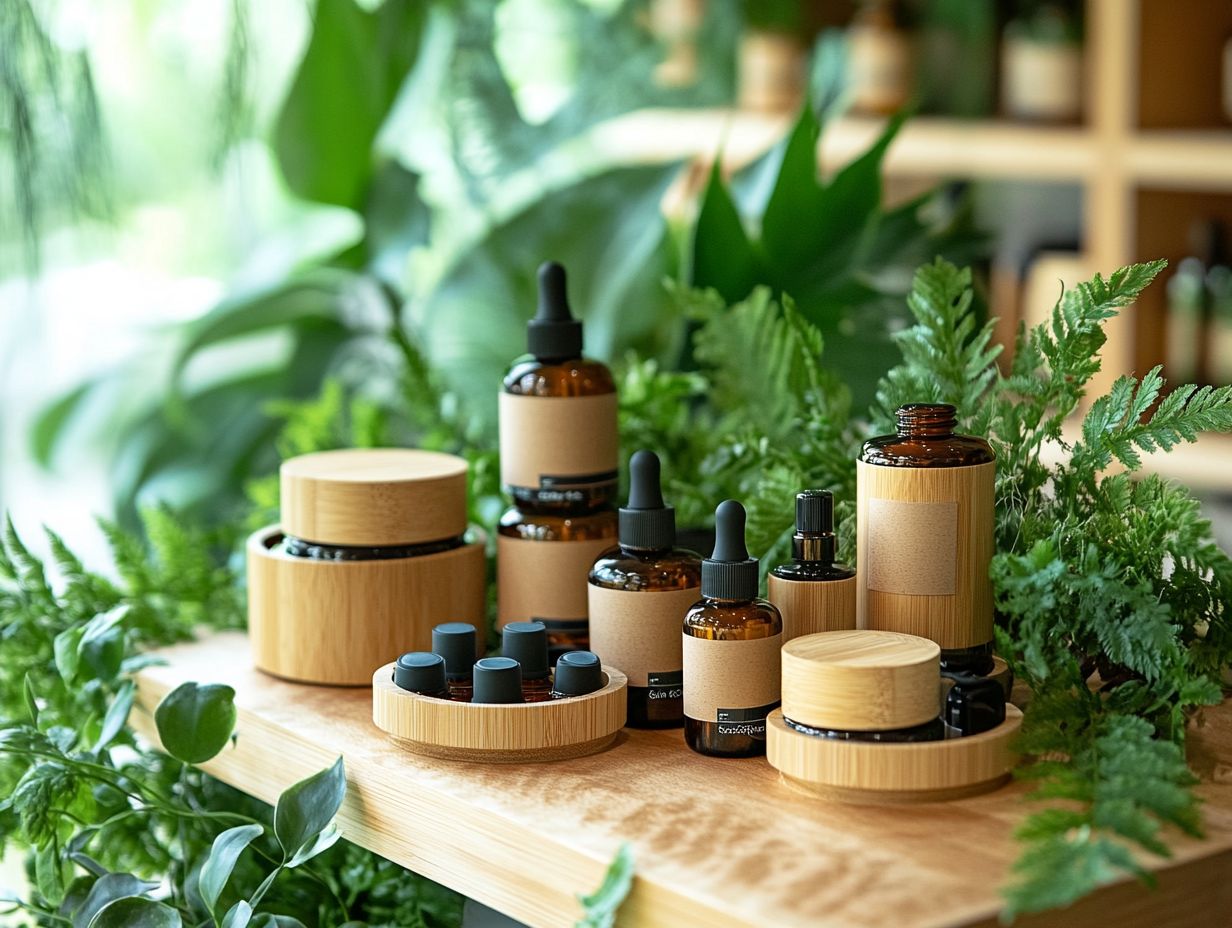
I find that bamboo packaging provides numerous advantages for beauty products, such as its biodegradable nature, distinctive aesthetic appeal, and capability to enhance product preservation.
This makes it a compelling option for brands aiming to promote sustainable practices.
Biodegradability and Durability
One of the key features I appreciate about bamboo packaging is its biodegradability, which allows it to decompose naturally. Plus this, its durability ensures that beauty products remain protected and maintain their integrity during transportation and storage.
This unique combination not only aligns with the principles of sustainable materials but also addresses the growing consumer demand for eco-friendly options.
For instance, while conventional plastics can take hundreds of years to break down, bamboo packaging typically disintegrates within a few months under the right conditions. The inherent strength of bamboo reduces the need for additional protective materials, making it a versatile choice for brands that aim to minimize their environmental footprint.
By leveraging bamboo’s natural properties, I believe eco-conscious companies can effectively deliver their products while championing a more sustainable future.
Reducing Carbon Footprint
Utilizing bamboo packaging allows me to significantly reduce my carbon footprint in the beauty industry, as bamboo is a renewable resource that requires less energy to produce compared to traditional packaging materials. This innovative approach not only lowers emissions during production but also contributes to less waste in landfills, thanks to bamboo’s biodegradable properties.
By adopting practices such as sourcing locally, I can minimize transportation emissions and collaborate with suppliers who prioritize eco-friendly methods. Integrating these strategies into my business model enhances my environmental responsibility and fosters a brand image that resonates with consumers who are increasingly concerned about climate change and sustainability.
Challenges and Limitations of Bamboo Packaging
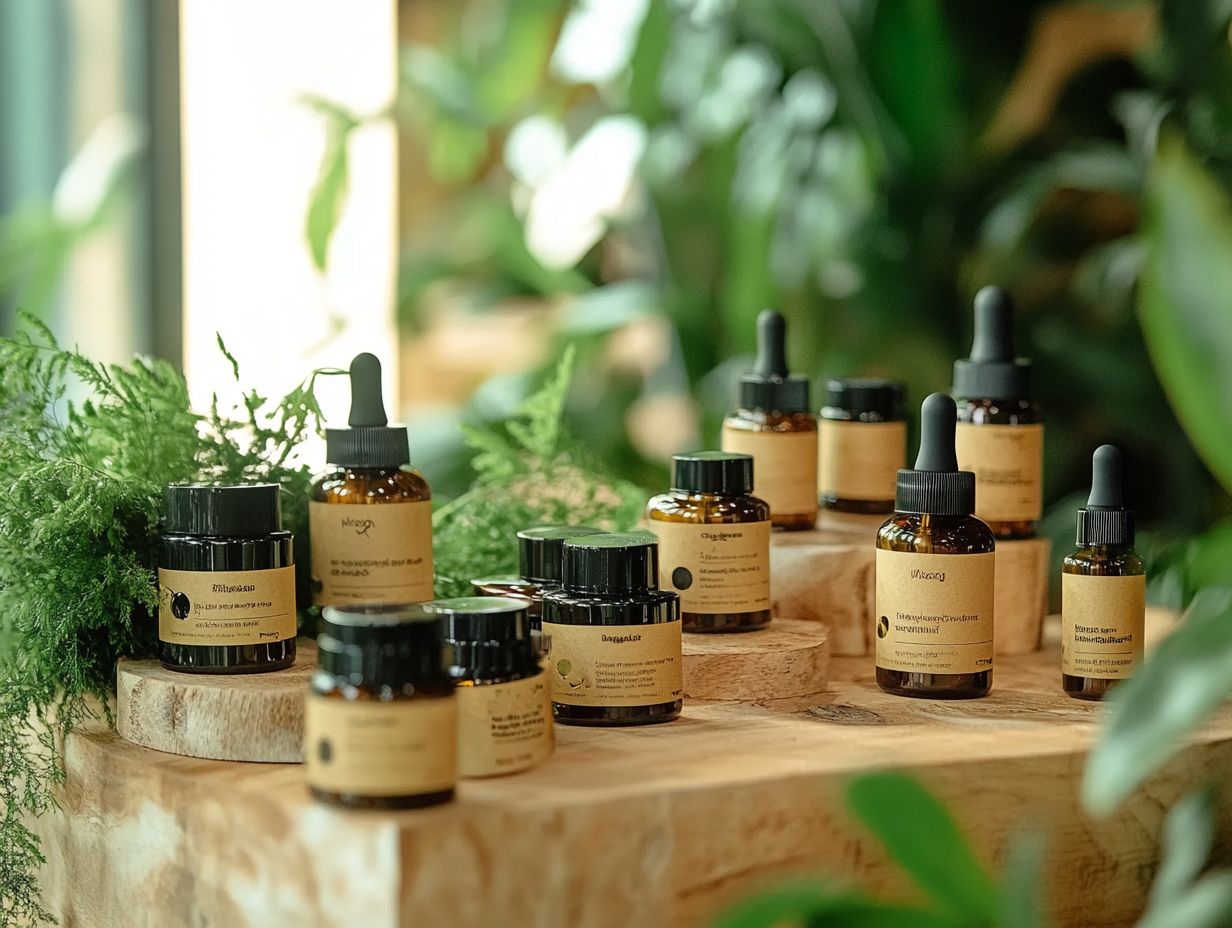
Despite its many advantages, I recognize that bamboo packaging encounters several challenges and limitations. These include potential issues with availability, higher production costs, and complexities within the supply chain that can impede its widespread adoption in the beauty industry.
Availability and Cost
The availability of bamboo as a raw material for packaging and the associated costs are critical factors influencing the adoption of bamboo packaging in the beauty products market.
Many brands are currently reassessing their supply chains to identify sustainable alternatives that align with their eco-friendly objectives. Bamboo, recognized for its rapid growth and minimal environmental impact, offers an appealing solution; however, fluctuations in supply can affect pricing.
While traditional packaging materials typically present lower upfront costs, increasing awareness of environmental issues has led consumers to be more willing to invest in sustainable options.
Some brands have effectively addressed these challenges by forming partnerships with bamboo suppliers to secure a consistent supply and investing in production technologies that help reduce costs over time, thereby making bamboo packaging a more feasible choice.
Future Outlook and Potential for Growth
The future outlook for bamboo packaging in the beauty industry is promising. I have observed an increasing consumer demand for sustainable materials, coupled with a heightened focus on eco-friendly solutions.
This trend indicates significant potential for growth in this innovative sector.
Expected Impact on the Beauty Industry
As bamboo packaging becomes increasingly prevalent, I anticipate its impact on the beauty industry to include a shift in consumer trends toward sustainability, influencing brand strategies and redefining the standards for cosmetic packaging.
This innovative approach not only aligns with the growing demand for eco-friendly solutions but also encourages companies to rethink their material usage and production processes. By adopting bamboo as a mainstream packaging option, brands can instill a sense of responsibility and authenticity, appealing to a more environmentally conscious consumer base.
This shift may foster competition among beauty brands, motivating them to implement sustainable practices and discover unique ways to differentiate themselves in a saturated market.
Ultimately, embracing bamboo packaging holds the potential to chart a new course in the industry, where sustainability is not merely an afterthought but a guiding principle that resonates strongly with customers.


